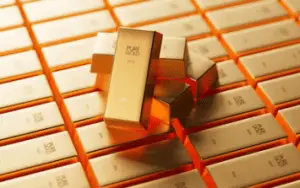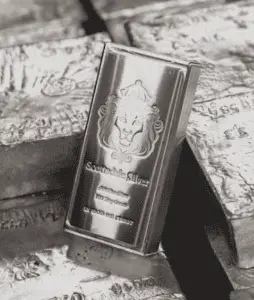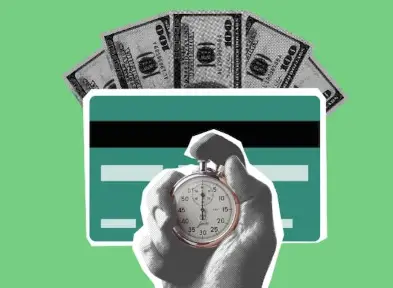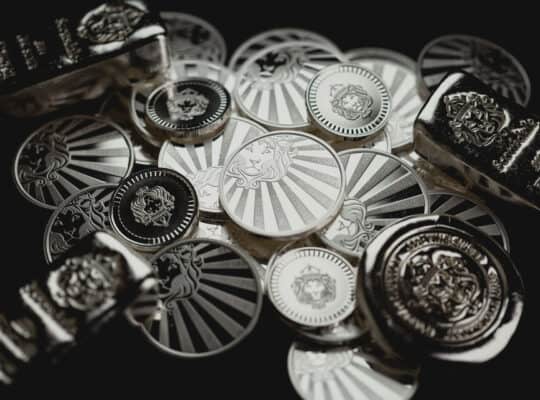In the current world, a key strategy of wealth preservation is diversifying the retirement portfolio. This is something that is getting a lot of attention/traction from people who are in their late 40’s and heading towards retirement. Among the ways of preserving that wealth is by converting 403(b) into precious metals investment – Gold and Silver investment. The only thing that is holding most people back is the question: How do I convert 403b into silver & gold investment?
Why Consider Precious Metals?
Various reasons that would make a person turn to precious metals exist.
One key reason for this attraction is that these metals, particularly gold and silver, have a historical role as a hedge against inflation. This means that while the purchasing power of traditional currencies might erode due to inflation, the innate value of these metals tends to rise. Hence, it is this inherent ability that makes them a valuable component for people looking to safeguard their portfolios against the effects of inflation which at times is erosive.
Precious metals offer a unique avenue for attaining diversification. Unlike traditional financial assets like stocks and bonds, the value of precious metals is often less correlated with broader market trends. It is this lack of correlation that acts as a stabilizing force in a diversified portfolio, assisting in the mitigation of the overall risk.
During economic uncertainty and market volatility, the appeal of tangible assets becomes particularly pronounced. In this period, precious metals, as physical commodities, provide people/investors with a tangible form of ownership. By holding physical gold and silver, a direct and tangible claim to wealth is represented.
How Do I Convert 403b into Silver & Gold Investment
The conversion of 403(b) to silver and gold investment can be done through three key ways; doing a rollover to a self-directed IRA, investing in gold and silver ETFs or funds, and investing in mutual funds with precious metal exposure.
1. Rollover to a Self-Directed IRA (SDIRA)
SDIRA is an option that is particularly appealing for people considering the inclusion of tangible assets like physical gold and silver coins and bars in their investment strategy. This is so because, unlike traditional IRAs that often limit investment options to the selection of stocks, bonds, and mutual funds, SDIRA empowers people/investors to take control of their retirement funds. Due to this, many direct them into a broader spectrum of assets like real estate, private equity, and precious metals.

When embarking on SDIRA, it is of utmost importance to find a reputable custodian specializing in self-directed accounts, specifically precious metals. This is because it is the role of a custodian to facilitate and oversee your investment, ensure that there is compliance with IRS regulations, and offer the necessary infrastructure for managing non-traditional assets. Some reputable custodians include Strata Trust, Goldstar Trust, Directed.com, and Equity Trust.
After identifying a custodian who is reliable, you will then need to select IRS-approved metals. IRS has specific criteria that outline the types of precious metals that are eligible for inclusion in an SDIRA. These are typically gold and silver coins and bars of a certain purity.
In order to acquire approved metals, as an investor, you will have to engage authorized bullion dealers. These dealers are acknowledged by regulatory bodies. They also adhere to industry standards, providing a level of assurance regarding the authenticity and quality of the precious metals.
Regarding the storage of the metals, it is crucial that you consider using secure storage facilities. These are often third-party depositories as they offer a safeguard for these assets.
2. Invest in Gold and Silver ETFs or Funds
For those people who do not want to have the burden of physically owning gold or silver, Exchange-Traded Funds (ETFs) and funds are another viable option.
These are financial instruments that trade on stock exchanges, mirroring the performance of an underlying index or asset. In the case of gold silver, and other precious metals, ETFs are designed to monitor the market prices of these metals.
An investor who invests in gold or silver ETFs essentially gains exposure to the price movements of the metals without physically owning them. The ETFs hold a reserve of physical bullion, and the fund’s value corresponds to the market value of that particular reserve. This technique allows people who have invested to benefit from the price appreciation of precious metals. This is without dealing with the logistical challenges of storing and securing physical assets.

Besides ETFs, funds are also another avenue for indirect exposure to precious metals. Some funds choose to invest in mining companies associated with gold and silver, a strategy that allows investors to capture the potential profits of successful mining operations. Alternatively, funds might opt for futures contracts associated with precious metals. These are financial agreements to buy or sell an asset at a predetermined future date and price.
Keep in mind that while both ETFs and funds offer indirect pathways to precious metals, you as the investor will have to consider the related feeds and potential tracking errors. This is because fees can erode over time and tracking errors are the reason behind discrepancies between the performance of an investment and the underlying asset it aims to replicate.
Example of these ETFs and funds are VanEck Vectors Gold Miners ETF (GDX), VanEck Vectors Gold Miners ETF (GDX), SPDR Gold Shares (GLD), and T. Rowe Price Global Metals & Mining Fund (PRMSX).
3. Invest in Mutual Funds with Precious Metal Exposure
Unlike EFTs and physical metals, mutual funds take a more diversified stance.
Mutual funds with precious metals exposure strategically invest in shares of companies engaged in gold or silver mining. Due to this indirect approach, investors benefit from the performance of mining companies without having to manage personal stocks.
Get to understand if Silver Rounds are a Good Investment
In contrast to ETFs that monitor price movements of physical metals directly, mutual funds offer an exposure that is more indirect. This is often perceived as an advantage for investors looking forward to exposure to precious metals while leveraging the potential growth and profitability of the mining industry.
When choosing a mutual fund’s holding, take into consideration factors like the company’s financial health, production efficiency, and geographical and geopolitical exposure. Also, as an investor, you will have to monitor the performance of the mutual fund on a regular basis. This would assist you in making informed decisions about whether to continue holding the funds or make adjustments based on changing market dynamics.
Examples of these mutual funds are VanEck International Investors Gold Fund (INIVX), T. Rowe Price Global Natural Resources Fund (PRGNX), US Global Investors Gold and Precious Metals Fund (USERX), Sprott Gold Equity Fund (SGDIX) and Fidelity Select Gold Portfolio (FSAGX).
Final Remark
The conversion process offers three key avenues: a rollover to a Self-Directed IRA for tangible ownership, investing in gold and silver ETFs or funds for indirect exposure without physical ownership, and mutual funds with precious metal exposure for a diversified approach. Based on this, the best answer for how do I convert 403b into silver & gold investment is through a Self-Directed IRA.








